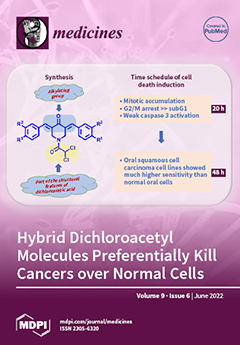Open AccessEditor’s ChoiceCommentary
The Sweet Side of Fungal Infections: Structural Glycan Diversity and Its Importance for Pathogenic Adaptation
by
Israel Diniz-Lima, Leonardo Marques da Fonseca, Jhenifer Santos dos Reis, Marcos André Rodrigues da Costa Santos, Kelli Monteiro da Costa, Carlos Antonio do Nascimento Santos, Pedro Marçal Barcelos, Kamila Guimarães-Pinto, Alessandra Almeida Filardy, Marco Edilson Freire-de-Lima, Debora Decote-Ricardo, Alexandre Morrot, Celio Geraldo Freire-de-Lima and Leonardo Freire-de-Lima
Cited by 4 | Viewed by 2204
Abstract
Fungal infections are the most common secondary infections in debilitated individuals in a state of chronic disease or immunosuppression. Despite this, most fungal infections are neglected, mainly due to the lower frequency of their more severe clinical forms in immunocompetent individuals with a
[...] Read more.
Fungal infections are the most common secondary infections in debilitated individuals in a state of chronic disease or immunosuppression. Despite this, most fungal infections are neglected, mainly due to the lower frequency of their more severe clinical forms in immunocompetent individuals with a healthy background. However, over the past few years, several cases of severe fungal infections in healthy individuals have provoked a change in the epidemiological dynamics of fungal infections around the world, both due to recurrent outbreaks in previously infrequent regions and the greater emergence of more pathogenic fungal variants affecting healthy individuals, such as in the
Cryptococcus genus. Therefore, before the arrival of a scenario of prevalent severe fungal infections, it is necessary to assess more carefully what are the real reasons for the increased incidence of fungal infection globally. What are the factors that are currently contributing to this new possible epidemiological dynamic? Could these be of a structural nature? Herein, we propose a discussion based on the importance of the virulence factors of glycoconjugate composition in the adaptation of pathogenic fungal species into the current scenario of increasing severity of these infections.
Full article




